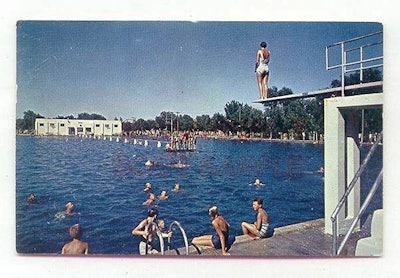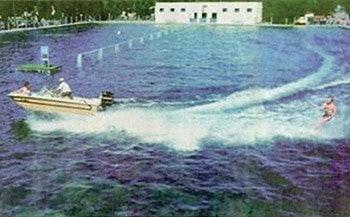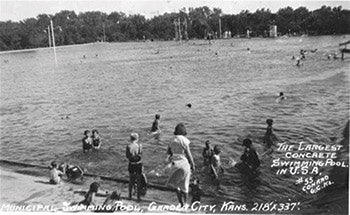

For nearly a century (97 years, to be exact), the "Big Pool" in Garden City, Kan., has been considered the world's largest hand-dug swimming pool — and for most of its history, the world's largest free public pool.
With a surface area of 72,600 square feet (larger than a football field!) and a volume of 2.6 million gallons, there's no question the Big Pool is, well, really big. Unfortunately, the pool today is more known for being an outsized water waster. City officials report the pool currently loses more than 200,000 gallons a day at a cost of about $1,000 per day. The prolific leaking problem will reportedly cost upwards of $750,000 to repair.
Added to the annual summer operating costs of about $800,000, the city is struggling to keep the Big Pool open. In fact, some officials say it's time to face facts — rather than spending the significant sum required to keep it in operation, it might be best to focus on replacing it with a new pool. As Fred Jones, the city's water resource manager, recently told the Kansas City Star, "It's kinda to the point where we feel like it's probably nearing the end of its service life."
RELATED: How Big is the Largest Pool in the World?

Despite the pool's cost and uncertain future, many local residents say they want the city to find the money to save the Big Pool, which is now registered as a historic landmark.
"I want to see the pool stay," says Sherry Frizell, 57, who reports she's been swimming in the Big Pool her entire life. "Instead of putting other stuff in, they should have fixed what was wrong in the first place."
The Big Pool was Garden City mayor H.O. Trinkle's big idea back in 1921. In order to control costs for the massive vessel, Trinkle convinced Garden City residents to pitch in and help hand-dig the pool and pour the concrete. The pool opened in 1922 and has been a fixture in the city ever since. Attendance peaked in the 1960s when more than 65,000 people used it annually; these days, attendance is much lower at about 300 per day.
The pool once hosted two elephants, Moki and Channa, who were allowed to swim in the pool as a way to promote the nearby Lee Richardson Zoo. In the 1980s, officials allowed water skiing in the pool as a way to drive fundraising for repairs.
The pool has already undergone three major renovations, the most recent and most expensive in 2006.
As for the pool's future, the outlook is bleak. Assistant city manager Jennifer Cunningham told the Kansas City New Service that she favors closing the pool and replacing it with a more durable structure. "Concrete breaks down over time, especially when it's out in the cold in the wintertime and it's out in the heat in the summertime and filled with water," she said. "It expands, it contracts and eventually breaks down."












































